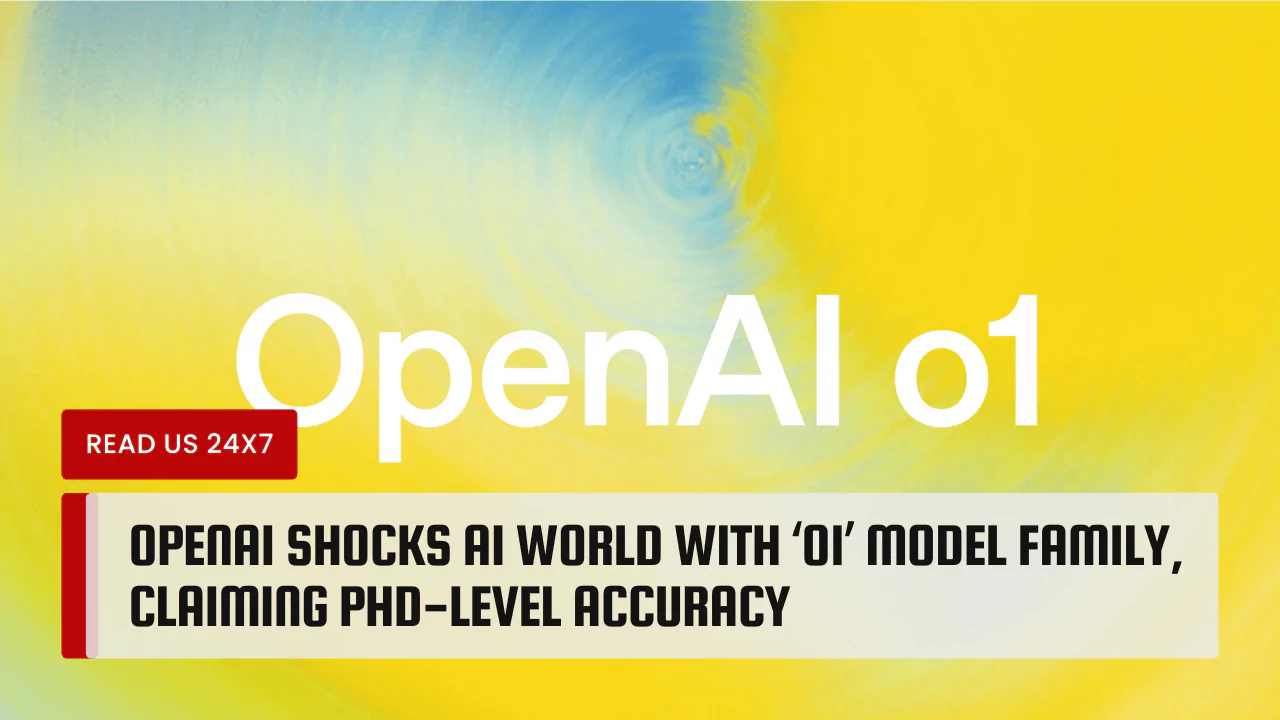OpenAI just changed the game in AI. They released new ‘o1’ models that can think like experts. These models can solve hard problems in science, coding, and math. They’re as smart as PhD students in physics, chemistry, and biology.
This is big news for anyone who works with complex data or tough questions.
I’ve spent years studying AI and its impact on science. The ‘o1’ models are a huge step forward. They can help with tricky tasks like quantum optics and cell data analysis. These tools could speed up research and lead to new discoveries.
Want to know more about how these AI models work? Keep reading.
Exploring the Key Features of the ‘o1’ Model Family
OpenAI’s ‘o1’ models show amazing skills in science and tech. They can solve hard math problems and handle tricky tasks with ease.
PhD-level Performance in Science and Technology
OpenAI’s o1-preview model shows amazing skills in science and tech. It does as well as PhD students in physics, chemistry, and biology. This AI can solve hard math problems too. It got 83% right on a tough math test that even smart high schoolers struggle with.
That’s way better than older AI models like GPT-4, which only got 13% right.
The o1-preview also shines in coding contests. It ranked in the top 11% of all players on Codeforces, a site for top coders. This shows that AI can tackle complex tasks in many areas.
It’s not just good at one thing. The o1-preview can handle tough problems across science, math, and coding.
Enhanced Reasoning Abilities
The o1 models show better thinking skills. They can solve problems like humans do. This helps them do hard tasks in science and math. For example, physicists can use o1 to make formulas for quantum optics.
The models also help with complex jobs in healthcare. They can mark cell data for researchers.
AI that thinks like us opens new doors in science and medicine.
O1 models are smart in many areas. They do well in tough math contests like the International Math Olympiad. They can also write code for hard coding tasks. This makes them useful for many jobs.
From lab work to coding, o1 models can help in big ways.
Advancements in AI Safety and Security for the ‘o1’ Models
OpenAI has made big strides in AI safety with its ‘o1’ models. These new models have better ways to stay safe and secure while they work.
Upgraded Safety Protocols
OpenAI takes safety very seriously. They work with top AI safety groups in the U.S. and U.K. to check their models. This helps make sure the AI is safe and works well. OpenAI also has rules inside their company to keep things secure.
They team up with the government to make their AI even safer.
The new ‘o1’ models have better safety features. They can think through problems step by step, like humans do. This helps them make smarter choices. The models can also do many tasks in a row without messing up.
Developers can use these models to build safe and useful AI tools.
Advanced Security Features
OpenAI has stepped up its game with new security features for the ‘o1’ models. These features guard against AI misuse and keep user data safe. The company works with top AI safety groups in the U.S. and U.K.
to test and improve their models. This team effort helps catch issues before they become big problems.
The ‘o1’ models have strong defenses against hacking attempts. In tests, the o1-preview model scored 84 on jailbreak tests. This score is much higher than GPT-4’s score of 22. The new models also use better ways to think through problems.
They can spot and avoid tricks that might make them share private info or do bad things.
Safety is not just a feature, it’s the foundation of our AI development. – OpenAI spokesperson
The Future of OpenAI’s ‘o1’ Series
OpenAI plans to push AI limits with future ‘o1’ models. These new AIs may solve harder math problems and help with complex science tasks.
Next-Generation Models and Expected Innovations
OpenAI plans to grow its o1 series. They will add new models and make current ones better. Soon, ChatGPT free users will get o1-mini. This move will bring smart AI to more people. The company also wants to add web browsing and file uploads to their tools.
More changes are coming to the o1 models. OpenAI will add function calling and streaming. They will also support system messages. These updates will make the AI even smarter. Users can expect to do more complex tasks with ease.
The future of AI looks bright with these new features.
Conclusion
OpenAI’s ‘o1’ models mark a big leap in AI. They can solve hard problems in science, math, and coding. These tools will help experts in many fields do their work better. The ‘o1’ series shows how fast AI is growing.
It’s clear that AI will keep changing how we work and learn.



